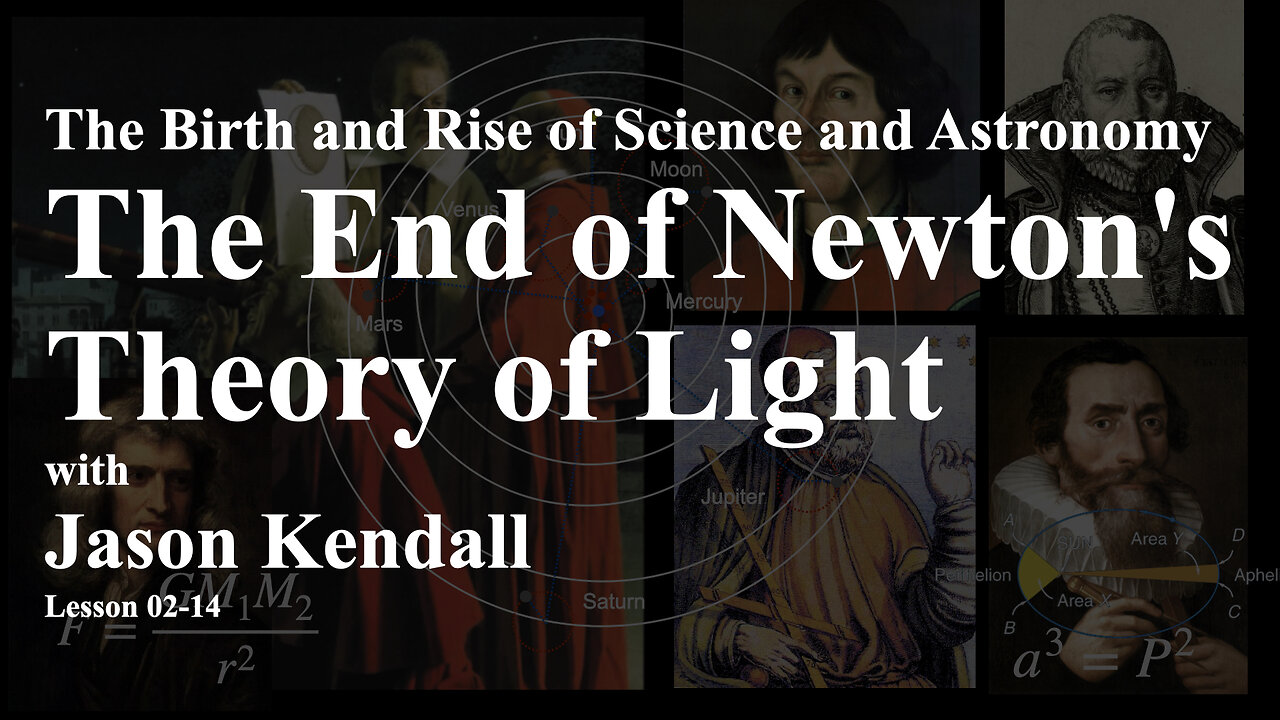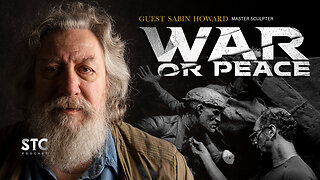Premium Only Content

The Evolution of Light Theory: From Newton to Quantum Mechanics
The exploration of light and its properties has undergone a significant evolution over the centuries, shaped by the contributions of notable scientists. Sir Isaac Newton’s corpuscular theory of light posited that light consists of particles, termed corpuscles, each possessing its own color. This theory was established in Newton’s seminal work, “Optics,” published in 1704, and it dominated the discourse on light for nearly a century. However, as experimental methodologies advanced, particularly during the early 19th century, the inadequacies of Newton’s theory in explaining various optical phenomena became increasingly apparent. Thus, the scientific community was compelled to reconsider and refine their understanding of light.
In 1803, Thomas Young devised an experiment that would prove pivotal in the study of light’s behavior. Young’s double-slit experiment challenged the prevailing corpuscular theory by demonstrating the wave-like properties of light. By directing a beam of light through two closely spaced slits, Young observed an interference pattern of alternating light and dark bands on a screen positioned behind the slits. This observation contradicted the expectations set forth by the corpuscular theory, which would have predicted two distinct spots corresponding to the slits. Instead, the wave nature of light became evident, as the interference pattern aligned with the principles of wave superposition.
Young’s findings laid the groundwork for a new understanding of light, suggesting that light behaves analogously to waves in a fluid medium, such as water. The phenomenon of constructive and destructive interference, where waves combine to amplify or diminish their amplitudes, became a cornerstone of wave theory. The implications of this discovery extended far beyond the realm of optics, influencing the development of quantum mechanics in the 20th century.
Further advancements in the understanding of light were made by Augustin-Jean Fresnel, who, in 1816, established that light is fundamentally a transverse wave. Fresnel’s work involved deriving complex mathematical formulations to describe diffraction, a phenomenon that occurs when waves encounter obstacles or openings. His theoretical predictions included the counterintuitive idea that a bright spot could emerge directly behind a barrier, a result of diffraction, which was later confirmed through experimentation.
By 1819, Fresnel’s theories had garnered support, effectively displacing Newton’s corpuscular theory. The mathematical rigor of Fresnel’s diffraction equations demonstrated the limitations of the particle model and solidified the wave theory of light. Additionally, Fresnel and Young further substantiated their claims by proving that light exhibits no longitudinal wave properties, affirming its purely transverse nature.
The concept of polarization emerged from these findings, revealing that light waves possess distinct orientations. This phenomenon can be illustrated through the analogy of a picket fence, where the orientation of the slats determines the allowable passage of light. A beam of light can only pass through a slit if its wave orientation aligns with the slit’s dimensions, leading to the understanding of how polarization affects light’s interaction with materials.
The significance of these developments lies not only in their immediate implications for the field of optics but also in their broader influence on subsequent scientific endeavors. The transition from Newton’s corpuscular theory to the wave theory of light marks a pivotal moment in the history of physics, illustrating the dynamic nature of scientific inquiry. As new experimental evidence emerged, the theories governing light were rigorously tested and refined, underscoring the importance of adaptability within the scientific method.
In conclusion, the journey from Newton’s initial proposals to the establishment of wave theory exemplifies the iterative nature of scientific understanding. As methodologies evolved and experimental techniques advanced, the elucidation of light’s properties has continued to inspire further inquiry and innovation. The exploration of light, from its particle-like behavior to its wave characteristics and polarization, has not only enriched our comprehension of optics but has also paved the way for groundbreaking advancements in various fields, including quantum mechanics and materials science. Thus, the study of light remains a vibrant and essential domain within the scientific landscape.
-
 LIVE
LIVE
ProRedmanX
49 minutes agoSunday Morning Coffee & Chaos ☕ | PUBG -> BF6 -> ??? #goonsquad
77 watching -
 5:23
5:23
Memology 101
22 days ago $12.56 earnedReporter HUMILIATES Kamala Harris over "WORLD-CLASS" dodge during interview
13.3K42 -
 LIVE
LIVE
ItsJustChrisTV
42 minutes agoRescue Rangin'! Lets (try to) Save Some Folks!
82 watching -
![[Arc Raiders] Time for Some Keys, Increase This Stash, Scrappy and Tables Are All Max. Time for More](https://1a-1791.com/video/fwe2/ac/s8/1/4/g/x/C/4gxCz.0kob-small-Arc-Raiders-Time-for-Some-K.jpg) LIVE
LIVE
Palermozeto
49 minutes ago[Arc Raiders] Time for Some Keys, Increase This Stash, Scrappy and Tables Are All Max. Time for More
41 watching -
 LIVE
LIVE
The Sufari Hub
2 hours ago🔴WE ARE FEATURED - BLACK OPS 7 EXTRACTION MODE - LEVEL GRINDING
72 watching -
 44:51
44:51
American Thought Leaders
16 hours agoHow This Tech Can Break China’s Rare Earth Monopoly | Dr. James Tour
19K10 -
 9:46
9:46
MattMorseTV
18 hours ago $30.17 earnedTrump just SHUT DOWN a $287,000,000 FRAUD RING.
52.1K115 -
 LIVE
LIVE
JakRazGaming
2 hours agoPlaying Hogwarts Legacy!! Playthrough Stream 4
63 watching -
 1:16
1:16
From Zero → Viral with AI
23 hours ago $2.09 earnedAI Isn’t Killing Work. It’s Killing the Wrong Kind of Work.
12.8K17 -
 2:47:27
2:47:27
Squaring The Circle, A Randall Carlson Podcast
21 hours agoEPIC! Randall & Sabin Howard, Master Sculptor Known As "Michelangelo of America," talk WAR or PEACE!
12.6K2